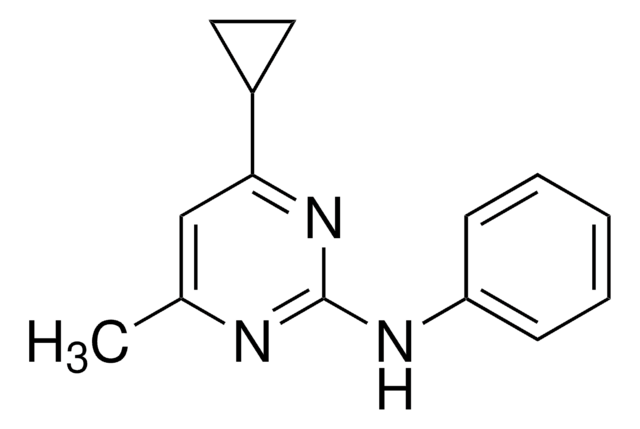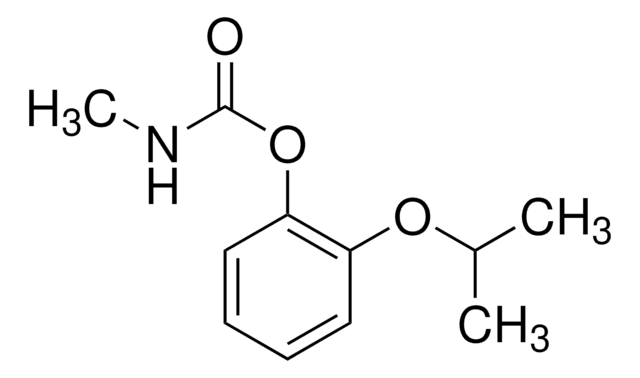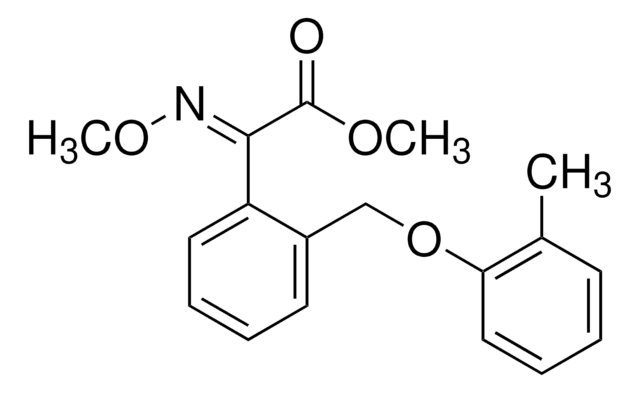About This Item
Recommended Products
grade
analytical standard
product line
PESTANAL®
shelf life
limited shelf life, expiry date on the label
application(s)
agriculture
environmental
format
neat
SMILES string
FC1(F)Oc2cccc(c2O1)-c3c[nH]cc3C#N
InChI
1S/C12H6F2N2O2/c13-12(14)17-10-3-1-2-8(11(10)18-12)9-6-16-5-7(9)4-15/h1-3,5-6,16H
InChI key
MUJOIMFVNIBMKC-UHFFFAOYSA-N
Looking for similar products? Visit Product Comparison Guide
Related Categories
Application
- Fludioxonil fungicide in agricultural biotech: Fludioxonil′s effectiveness against the two-component histidine kinase Bos1 in Botrytis cinerea was explored, revealing its binding mode and molecular mechanism. This research underscores its critical role as a fungicide in agricultural biotechnology, providing insights that could lead to improved crop protection strategies (Yin et al., 2024).
- Fludioxonil biochemical research for pathogen resistance: The study on Fusarium species causing soybean root rot examined the genetic basis of differing sensitivities to DMI fungicides, including fludioxonil. This contributes to a deeper understanding of fungal resistance mechanisms, enhancing the development of more effective fungicidal treatments (Zhang et al., 2024).
- Fludioxonil antifungal properties in plant disease control: Research characterized fludioxonil and phenamacril dual resistant mutants of Fusarium graminearum, highlighting fludioxonil′s critical role in managing resistance in pathogens and its ongoing relevance in managing crop diseases (Wen et al., 2024).
Legal Information
Signal Word
Warning
Hazard Statements
Precautionary Statements
Hazard Classifications
Aquatic Acute 1 - Aquatic Chronic 1
Storage Class Code
11 - Combustible Solids
WGK
WGK 2
Flash Point(F)
Not applicable
Flash Point(C)
Not applicable
Personal Protective Equipment
Certificates of Analysis (COA)
Search for Certificates of Analysis (COA) by entering the products Lot/Batch Number. Lot and Batch Numbers can be found on a product’s label following the words ‘Lot’ or ‘Batch’.
Already Own This Product?
Find documentation for the products that you have recently purchased in the Document Library.
Customers Also Viewed
Our team of scientists has experience in all areas of research including Life Science, Material Science, Chemical Synthesis, Chromatography, Analytical and many others.
Contact Technical Service
















